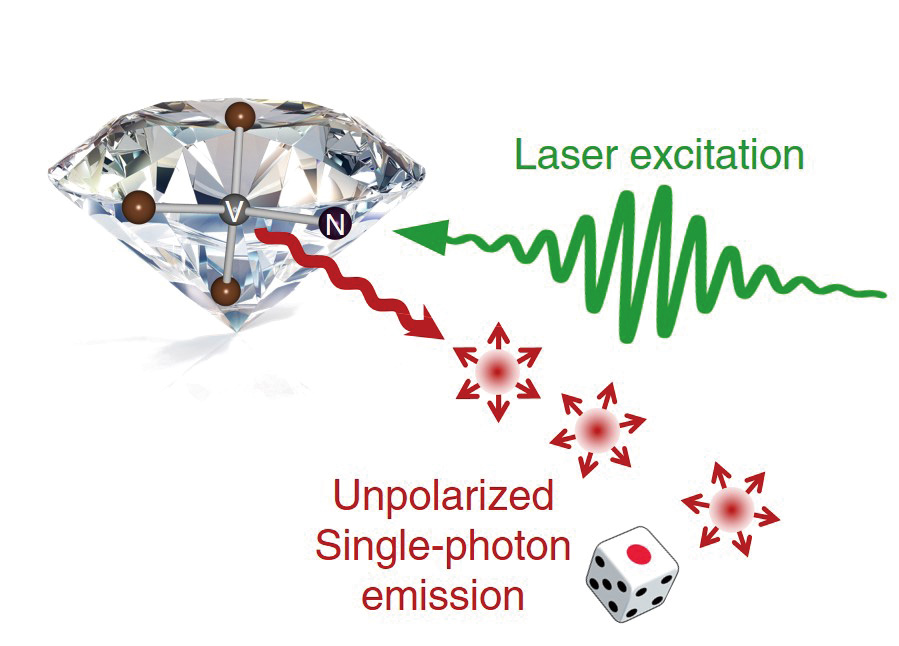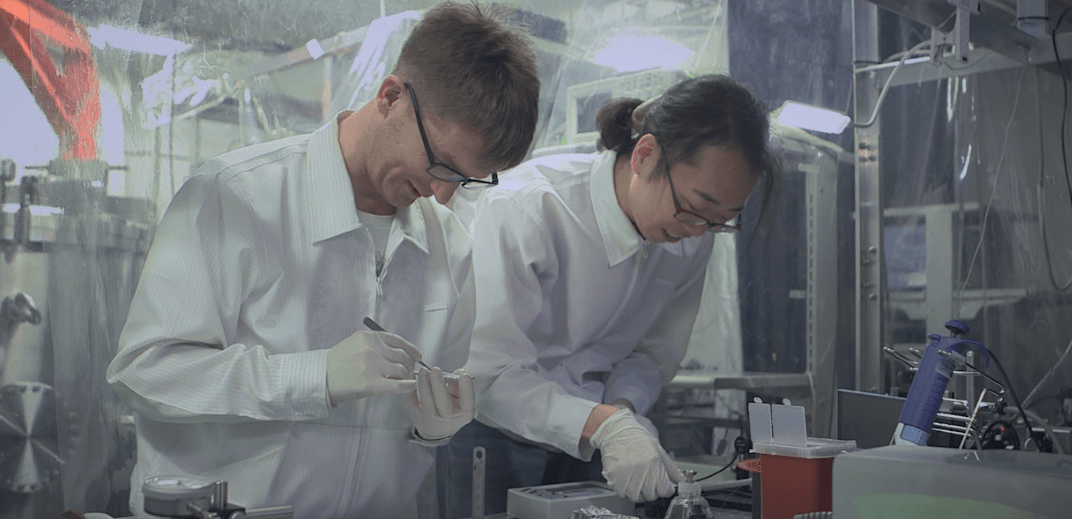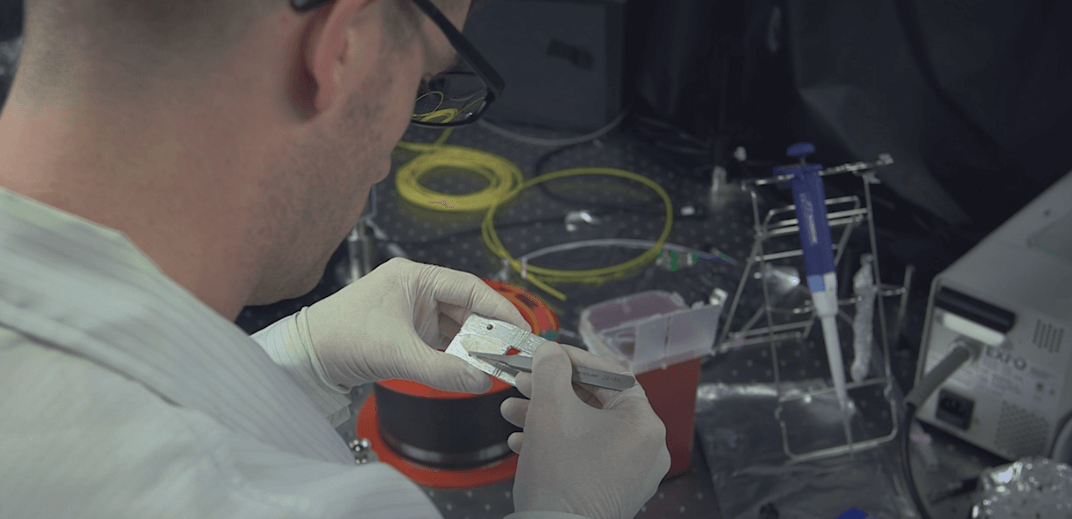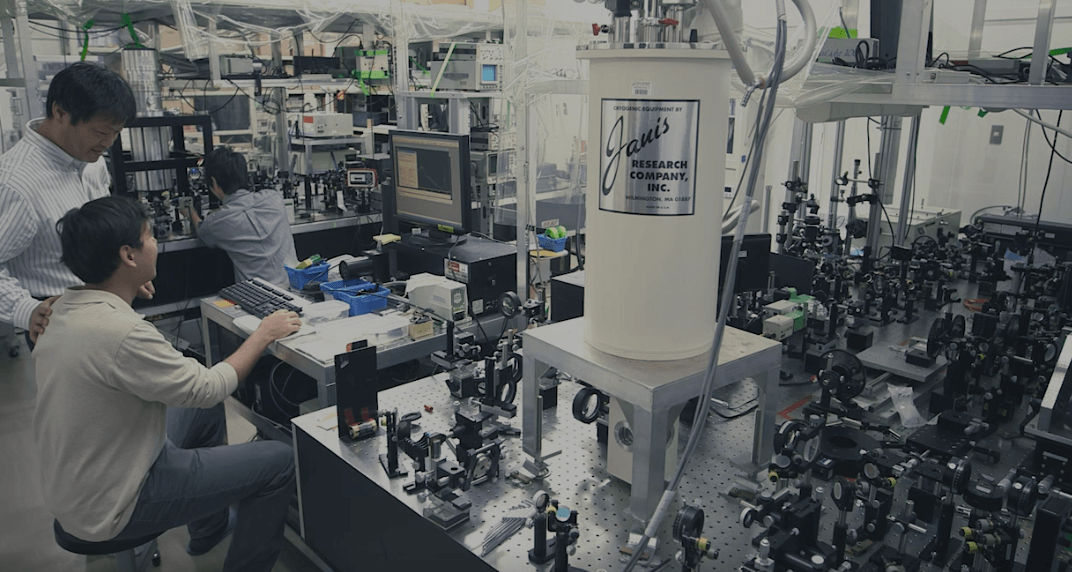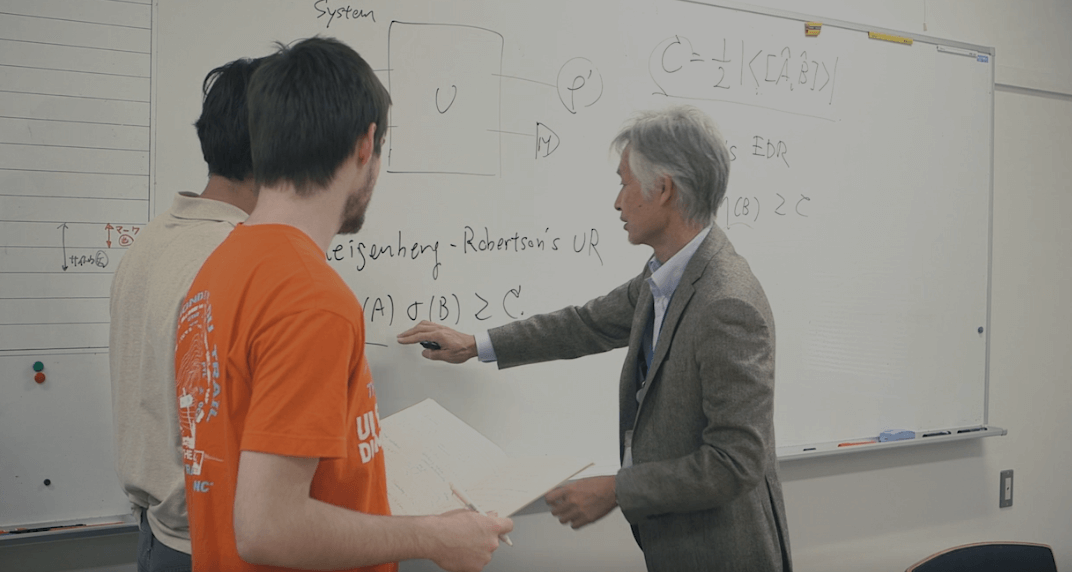- >> Information Communication Platforms Division
-
Quantum-Optical Information Technology
Researcher
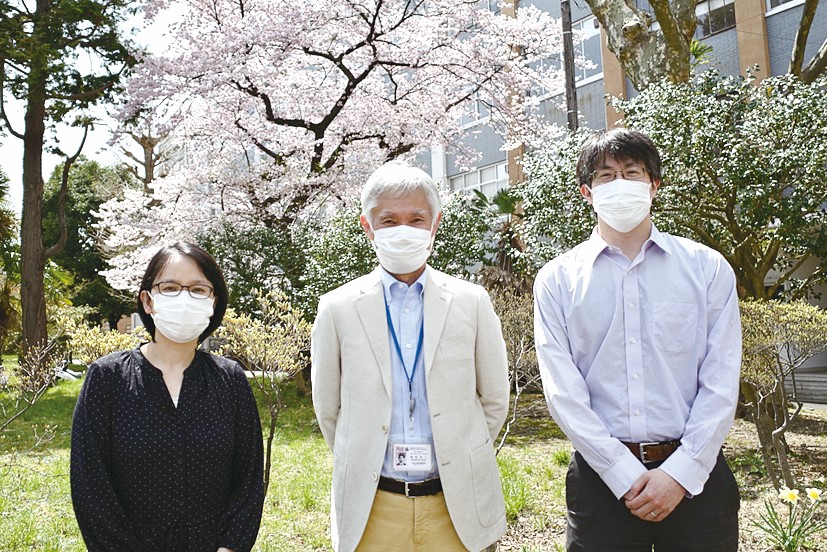
- [ Professor ]
Keiichi Edamatsu - [ Assistant Professor ]
Soyoung Baek
Group Web Site
http://www.quantum.riec.tohoku.ac.jp/
Research Activities
Current information and communication technology utilizes macroscopic and classical physical quantities, such as voltage or frequency of electric fields. The classical technology will reach the limit of information density and speed in the near future. The quantum-mechanical counterpart, “quantum information processing and communication technology”, in which information is carried by microscopic and quantum-mechanical quantities, is expected to overcome the difficulty. Our goal is to develop quantum information devices utilizing quantum interaction between electrons and photons in semiconductor nanostructures, to obtain further understanding of their physics, and to apply them to practical quantum information technologies.
Quantum-Optical Information Systems(Prof. Edamatsu)
Research topics
- Novel techniques for the generation and detection of photon entanglement.
- QICT devices using optical fibers, waveguides, and semiconductor nanostructures.
- Techniques for extreme quantum measurement and quantum state synthesis using photons.
Development of fundamental devices and quantum measurement techniques for quantum info-communication technology (QICT) utilizing photons, novel materials and semiconductor nanostructures.
